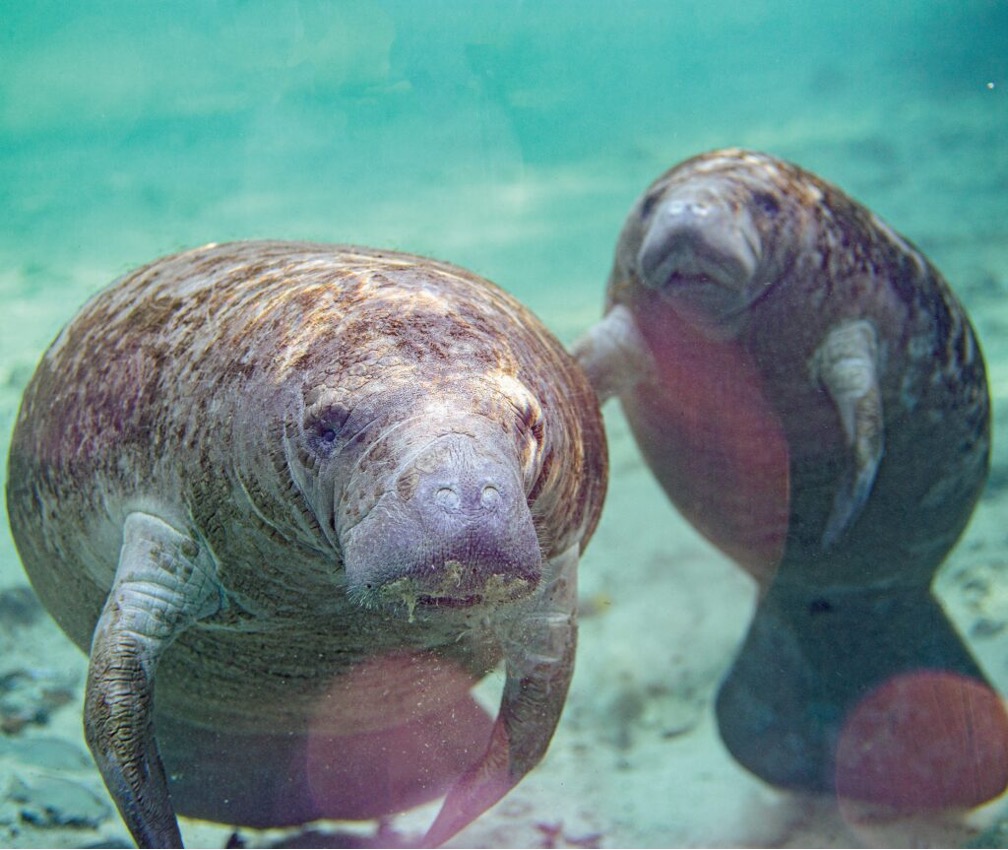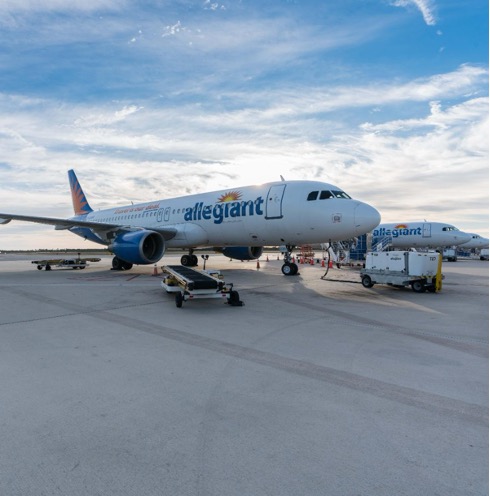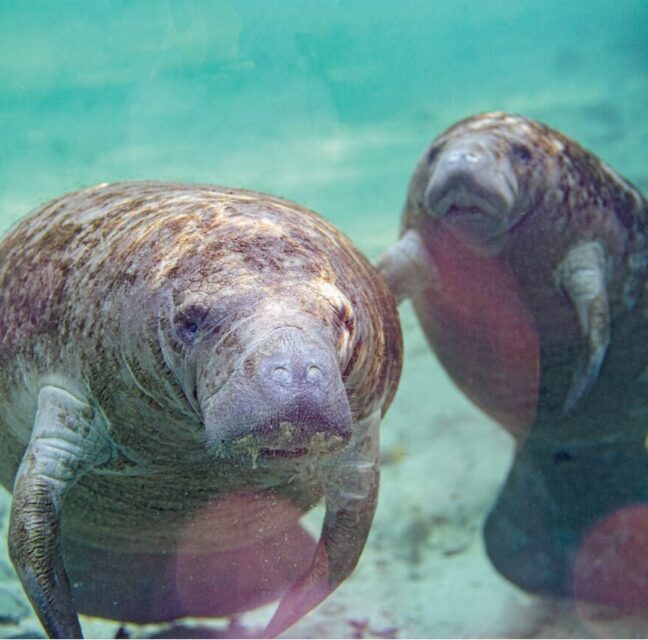
The recent denial by a federal government agency to upgrade the Florida manatee to endangered status will harm the gentle sea cow’s chances for long-term survival, legal and wildlife experts say.
The U.S. Fish and Wildlife Service (FWS) announced on January 13 that the Florida manatee will remain listed as a threatened species under the Endangered Species Act. Meanwhile, the FWS raised the status of the Antillean manatee of Puerto Rico from threatened to endangered.
Both Florida and Antillean manatees are subspecies of the West Indian manatee. The finding shows that FWS decided to treat them separately when listing their status.
While praising the awarding of endangered status to the Antillean manatee, of which there are an estimated 250 left, the FWS should have given the Florida manatee the same protection, said Ragan Whitlock, a Florida-based attorney with the Center for Biological Diversity.
“The agency’s denial completely failed to account for the ongoing die-off that is weakening the (Florida) manatees’ chance at long-term survival,” Whitlock said. “Thousands of manatees have starved to death in the last few years, and that should have been accounted for.”
The petition to raise the Florida manatee to endangered status was filed in 2022 by the Harvard Law School’s Animal Law & Policy Clinic on behalf of the Center for Biological Diversity, Save the Manatee Club, Miami Waterkeeper, and Frank S. González Garcia. Initially, the petitioners were hopeful because the FWC’s 90-day finding indicated that the uplisting may be warranted based on the documentation submitted. Then, a series of delays set in.
The FWS had until November 2023 to make a final decision. That deadline passed. A new deadline was set for the end of the fiscal year in September 2024. That deadline also passed.
Patrick Rose, an aquatic biologist and executive director of Save the Manatee Club, said the decision is now here, and it’s the wrong one.
“They’re supposed to look at the risk and threats and whether or not they’re already under control” and whether they would be under control for the foreseeable future, Rose said. “We think it fails on both those grounds. I think our most critical points are that they haven’t used the best available scientific information, which they’re required to do.”
He’s talking about manatee deaths over several years that agencies term an “unusual mortality event.” In 2021, a record setting 1,100 manatees died, with more than half of those deaths linked to water pollution in the Indian River Lagoon, a 156-mile estuary on Florida’s east coast. The pollution decimated the seagrass beds that manatees rely on for food, culminating in 90% of seagrasses being obliterated over a 10-year period. The manatees died of starvation.
Rose said the seagrass died due to human induced nutrient pollution entering the water from development, agriculture, runoff from highways and land infrastructure, failing septic systems, and other sources.
Environmental officials resorted to emergency feedings with lettuce to try and slow or stop the deaths.
According to records from the Florida Fish and Wildlife Conservation Commission, another 800 manatees died in 2022. In 2023, the death count was 555, and in 2024, there were 565 deaths. These years also saw fewer manatee births and many more perinatal deaths, with 153 perinatal deaths in 2024.
“The jury’s kind of still out on what all this additional perinatal mortality means,” Rose said.
Some think that the majority of those females are in much better condition and able to get pregnant, but not to the point that they can successfully carry the calf to full term, Rose continued.
While the FWS is aware of the manatee mortality data, “they want to wait until something’s been fully peer-reviewed and published” before using it for the basis of their decision-making, Rose said. So, the “unusual mortality event” data wasn’t factored in when FWS put together their models and started running future scenarios for the manatee.
“But if you don’t keep them updated regularly with the best available scientific information, the model is only as good as the data they used and incorporated within it,” he said.
While it’s true that there is some recovery of seagrasses, “it’s still nowhere close to where it needs to be,” Rose said. “And the risk and threats are as serious as they’ve ever been and likely getting worse.”
Whitlock said the driver of the collapse of seagrasses across the state has not been addressed.
“It’s clear that nutrient inundation into the Indian River Lagoon, for example, is rampant,” he said. “It is not being stopped. And there’s a finger-pointing game right now between the agencies.”
Because nothing has changed, “I believe it is entirely possible that another unusual mortality event happens,” Whitlock said.
“One thing that I find extremely alarming is we were just feeding these animals to stop them from starving to death,” Whitlock said. “There was a literal supplemental feeding program where the agencies were tossing lettuces to this species to avoid additional mortality. If hand-feeding a species is not indicative of its decline and its need to be listed as endangered, I don’t know what is.”
The possibility of another unusual mortality event might be increased when you consider that the places manatees gather to seek refuge from the cold-warm water outfalls at power plants are on track to disappear.
“We know that’s going to happen,” Whitlock said. “Florida Power & Light has issued a net zero by 2045 goal. And that necessarily means removing some of these really big outfalls like Cape Canaveral that supports more than a thousand manatees at one time. We’re going to be looking at another unusual mortality event, and it’s frustrating that the service consistently disregards their impact.”
FPL is a subsidiary of NextEra Energy Inc., with the “Real Zero” goal of eliminating carbon emissions by 2045. FPL serves 12 million Floridians.
Manatees can’t survive in water below 68 degrees Fahrenheit. They flock to the power plants with these warmwater discharges in the winter because natural warmwater sources, such as springs, have suffered from excess nutrient pollution.
“I think conservation organizations generally support the removal of these warmwater outfalls,” Whitlock said. “I mean, this is not (a) natural habitat, and it would be best if we could have threatened and endangered species living in natural habitat. The problem is they’ve created this for them, and the manatees heavily rely on it.”
The FWC’s Warm Water Habitat Action Plan “recognizes they’re likely to lose a third of the population of Florida manatees, where these power plant outfalls … go offline. They know it’s going to be extremely difficult to transition them,” Whitlock said of the manatees.
WAYS TO HELP MANATEES
• Call FWC’s Wildlife Alert toll-free number: 1-888-404-FWCC (1-888-404-3922) or #FWC or *FWC on a cellphone or text 847411 with keyword “FWC,” followed by the city and/or county if you see a sick, injured, dead, or tagged manatee.
• Boaters will find them easier to spot if they wear polarized sunglasses and keep a lookout for signs of manatees such as the circular “footprints” they trace on the top of the water or their snouts sticking up out of the water.
• Look, but don’t touch manatees. Keep your distance when boating, even if you are steering a canoe, kayak, or paddleboard. Be a good role model for others so that they learn how to watch and enjoy manatees without disturbing the animals.
• The plate you buy matters; support FWC manatee rescues and research. Next time you renew your tag, consider a “Save the Manatee” license plate.
• Show your support for manatee conservation by proudly displaying a manatee decal. These high-quality stickers feature original artwork and are available from your local Tax Collector’s office with a $5 donation.






